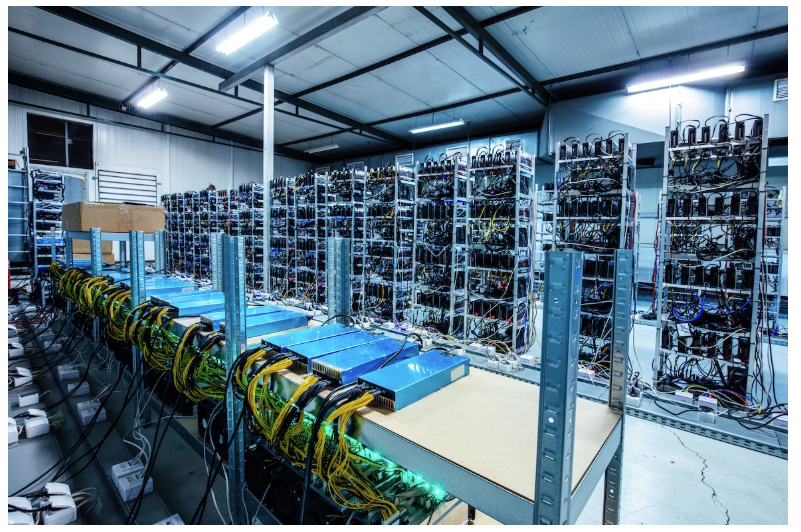The Bitcoin network has just weathered a rough patch, with its hashrate—the lifeblood of its mining power—taking a tumble of over 15% since 15 June. That’s no small drop in the ocean. It marks the sharpest decline in three years, and it’s got the crypto world sitting up and paying attention.

Image 1 (Source: CryptoSlate)
Between 15 June and the following Tuesday, the hashrate sank from nearly 943.6 billion terahashes per second down to around 799.9 billion TH/s. That’s a chunk off the top no one saw coming.
The hashrate is essentially a reading of how much computing grunt is behind Bitcoin mining. A higher rate keeps the system humming along smoothly, while a nosedive like this one suggests miners are either pulling out of the race or scaling back. When fewer hands are on deck, the whole network can slow down, making it less efficient and, to some degree, more exposed.
Iran’s Turmoil Sends Ripples, but It’s Not the Main Wrench in Bitcoin’s Gears
Many were quick to connect the dots to Iran. The country has become a heavyweight in Bitcoin mining, with reports from the National Council of Resistance of Iran stating that some mining operations are run or shielded by state-aligned groups, particularly the Islamic Revolutionary Guard Corps.
Late in June, Iran found itself under pressure on multiple fronts. A sweeping internet blackout was put in place, allegedly to protect critical infrastructure from cyber threats. Around the same time, the US launched strikes on Iranian nuclear facilities. That sparked local power disruptions, sending shockwaves through the country’s grid.
While these incidents raised eyebrows, the numbers tell a different story. Only about 3% of the total hashrate decline lined up with these events. The bulk of the fall was already underway before the internet was cut or the missiles flew. So, while Iran may have thrown a spanner in the works, it wasn’t the main cog behind the machinery stalling.
#Bitcoin ’s hashrate dropped over 15% — the steepest fall in 3 years
But why now? Was it geopolitics? Heatwaves? Or is there a deeper shift underway in the #mining landscape?
We break it down here: https://t.co/NyS6joLSYK#BitcoinMining #BTC #Crypto #CryptoMining #Vnish pic.twitter.com/MCVDLZ2fBB
— VNISH (@Vnishfirmware) June 26, 2025
Heatwaves and High Bills Turn Up the Pressure
While Iran’s role grabbed headlines, other culprits were working behind the scenes. A heatwave sweeping across parts of the United States turned up the heat on miners—literally and financially.
Mining Bitcoin requires serious power, and when the mercury rises, the cost of keeping equipment cool goes through the roof. To make matters worse, power companies like Con Edison in New York were urging consumers to ease off the grid. At the same time, wholesale electricity prices surged to levels not seen since January.
For miners working on thin margins, this kind of spike can be the straw that breaks the camel’s back. Shutting down rigs temporarily becomes the only way to keep from bleeding money. Around the globe, the story’s the same—energy costs are marching upward, and many mining operations are feeling the squeeze.
In this climate, only the fittest survive. Smaller or less efficient setups are the first to fold, and that can cause a chain reaction across the network.

Image 2 (Source: Forkast News)
Hashrate: Not All It Seems
It’s worth keeping in mind that the hashrate isn’t measured with a stopwatch or speedometer. Instead, it’s estimated based on how quickly blocks are added to the blockchain and how hard those blocks are to crack. That introduces a bit of guesswork, as mining success involves a degree of luck.
So, while day-to-day fluctuations are par for the course, a sustained drop like this one doesn’t usually happen without something stirring the pot. The numbers might not be perfect, but they’re singing the same tune.
Bitcoin Mining Faces a Perfect Storm, but the Network Knows How to Swim
Put together, the factors paint a picture of a network under pressure from all sides. Iran’s digital blackout and power issues may have added a few cracks, but the broader shift was already well underway. Rising temperatures, soaring power bills, and shrinking profit margins have done more than their fair share of damage.
Some market watchers, like independent analysts and mining insiders, have noted that the industry may be entering a tougher season. It’s a bit of a perfect storm—geopolitical tension, economic drag, and environmental stress all converging at once.
Read also:Trump’s Executive Order Could End Crypto Debanking in the US
Despite the downturn, Bitcoin isn’t up the creek without a paddle. The protocol is built to adapt. If mining slows down too much, the system recalibrates itself by adjusting the difficulty level. This makes it easier for miners still on the grid to solve blocks, helping the network find its rhythm again.
So while this kind of drop is nothing to shrug at, it’s not a death sentence either. The network has been through rougher waters before and come out the other side.

